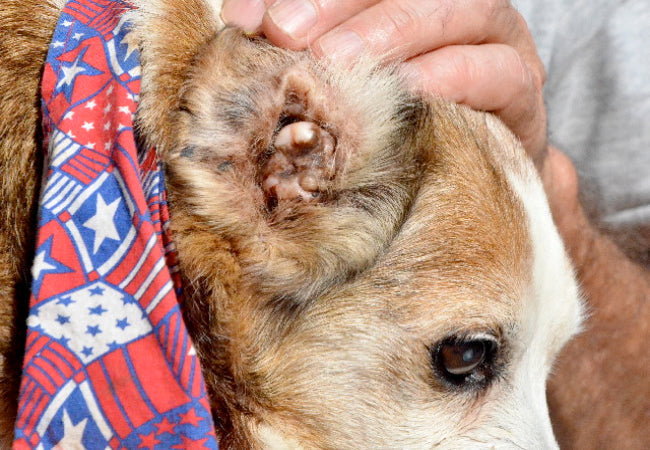Ear Infections in Dogs 2025: Causes, Symptoms & Treatment 🐶✨

In this article
Ear Infections in Dogs 2025: Causes, Symptoms & Treatment 🐶✨
By Dr. Duncan Houston BVSc
If your dog is scratching their ears, shaking their head, or you catch a whiff of something funky—there’s a good chance they have an ear infection.
I’m Dr. Duncan Houston, veterinarian and founder of Ask A Vet. Ear infections are one of the most common reasons dogs visit the vet. Let’s go over how to spot them, what causes them, and how to treat them properly.
🧠 Why Dogs Get Ear Infections
- Dogs have L-shaped ear canals that trap moisture and debris
- Floppy ears and hair inside the canal can make it worse
- Most infections are caused by yeast, bacteria, or both
🔍 Signs of an Ear Infection
- Head shaking or tilting
- Scratching or rubbing the ears on furniture
- Red, inflamed ears
- Brown, black, or yellow discharge
- Bad smell from the ears
- Sensitivity or pain when touching ears
📋 Common Causes
- Allergies (environmental or food)
- Moisture buildup from swimming or bathing
- Excess wax or poor ear cleaning habits
- Foreign bodies (grass seeds, dirt, debris)
- Ear mites (less common in dogs than cats)
🩺 How Vets Diagnose Ear Infections
- Physical exam with an otoscope
- Cytology – checking ear debris under a microscope
- Culture and sensitivity testing for recurring cases
💊 Treatment Options
1. Topical Medications
- Most infections are treated with medicated drops (antibiotic + antifungal + steroid)
- Some products are once-daily or even long-acting (e.g., Claro, Osurnia)
2. Ear Cleaning
- Crucial to clear debris and let medication work
- Use vet-recommended cleaner like Epi-Otic or TrizEDTA
- Never use hydrogen peroxide or alcohol
3. Treat Underlying Causes
- Address allergies, remove hair, and dry ears after water exposure
- In chronic cases, food trials or allergy testing may be needed
🚫 What NOT to Do
- Don’t self-diagnose or use leftover meds without vet approval
- Don’t skip rechecks—ears often look better before they’re fully healed
- Don’t dig deep into ears with cotton swabs
🧼 Prevention Tips
- Dry ears thoroughly after bathing or swimming
- Clean ears weekly (more often for floppy-eared breeds)
- Watch for allergy signs: paw licking, itchy skin, frequent ear issues
🔗 Helpful Tools from
- Explorer Harness – Prevent head-shaking on leash while recovering
- Dual Pocket Dispenser – Carry wipes and meds during walks
👨⚕️ When to See a Vet
- If symptoms last more than 48 hours
- Discharge, odor, or signs of pain
- Recurring infections (could indicate allergies or resistant bugs)
📋 Summary Excerpt
Is it a dog shaking their head or scratching their ears? A vet explains the top signs of ear infections, how to treat them safely, and what to do to prevent them from coming back.
❓ FAQs
-
Q: Can I use human ear drops on my dog?
A: No. Human ear drops may be harmful. Always use veterinary products prescribed for your dog’s specific condition. -
Q: Are ear infections contagious?
A: No. Most are not contagious to other pets or people—but underlying issues (like mites or allergies) may be. -
Q: How can I prevent my dog’s ear infections?
A: Weekly cleaning, drying ears after water exposure, and managing allergies are key.






